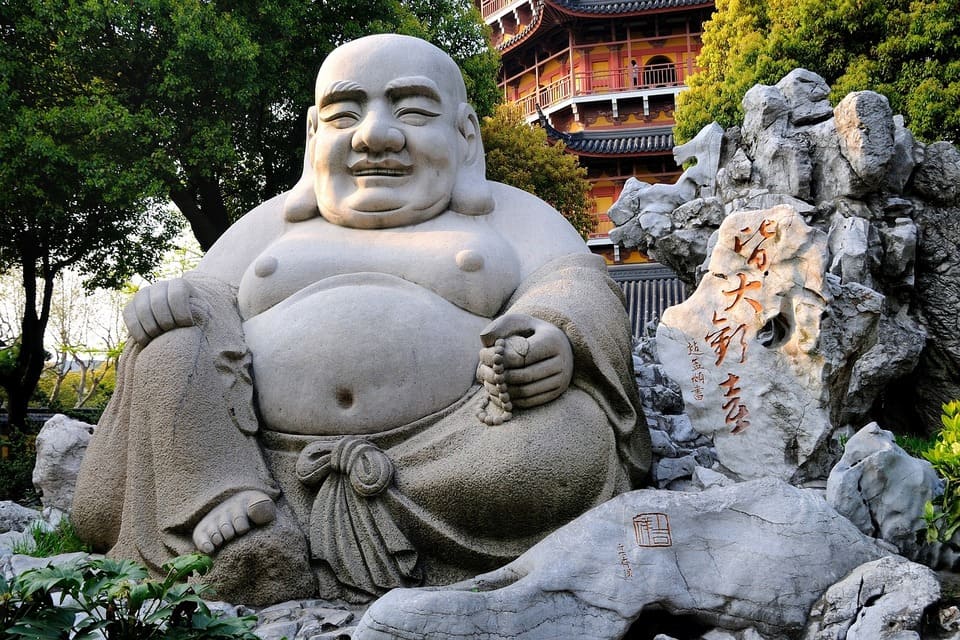
Translating Simplified and Traditional Chinese: A Detailed Overview
The Chinese language is distinguished by its use of two scripts: Simplified and Traditional Chinese. Translating between these scripts is complex, requiring a comprehensive understanding of linguistic differences, cultural contexts, and historical developments.
In this article, we will explore the importance of translating between Simplified and Traditional Chinese or vice versa, the complexities involved, and how PoliLingua's translation services can make this process seamless and accurate.
Why Does Chinese Have Two Scripts?
Due to historical, political, and cultural factors, the Chinese language uses two distinct scripts — Simplified Chinese and Traditional Chinese. Traditional Chinese, which has been used for thousands of years, features detailed characters developed over centuries. In contrast, Simplified Chinese was introduced in the mid-20th century as part of a literacy reform effort by the People's Republic of China. The simplification aimed to make reading and writing more accessible by reducing character complexity. As a result, Simplified Chinese became the standard in Mainland China and Singapore, while Traditional Chinese continued to be used in Taiwan, Hong Kong, and Macau. This dual-script system reflects the diverse historical and cultural developments across Chinese-speaking regions.
The Need for Translating Traditional and Simplified Chinese
- Geographic Distribution: Traditional Chinese is predominantly used in regions like Taiwan, Hong Kong, and Macau, as well as by many overseas Chinese communities. On the other hand, Simplified Chinese is the standard script in mainland China and Singapore. This geographical distribution necessitates translation services to facilitate communication and understanding across these regions.
- Business Expansion: Accurate translation allows businesses to reach wider audiences, tailor products and services to regional preferences, and ensure legal compliance through the translation of documents and contracts.
- Academic and Research Pursuits: Scholars and researchers often need to access texts and documents written in both Traditional and Simplified Chinese. Translation services are essential for accurately comprehending and analyzing these materials, regardless of the script they are originally written in.
- Technology and Software: User interfaces, software documentation, and technical support materials often need translation to be user-friendly and accessible to both Simplified and Traditional Chinese speakers.
- Legal and Government Documents: Legal documents, government forms, and official communications may need to be translated to comply with regional regulations and ensure clear understanding across different Chinese-speaking communities.
Complexities in Translating Simplified to Traditional Chinese
Translating from Simplified to Traditional Chinese presents several challenges due to the complexity of Traditional characters and the potential for multiple character variations. Here are some key considerations when translating in this direction:
- Character Mapping - One of the fundamental steps in translating from Simplified to Traditional Chinese is character mapping. This involves identifying the corresponding Traditional character for each Simplified character. While some characters have straightforward mappings, others may have multiple possibilities, leading to ambiguity.
- Context Sensitivity - Certain Simplified characters may have different Traditional equivalents depending on the context of the text. Every Chinese language translator must possess a deep understanding of the language and its nuances to make accurate choices.
- Handling Ambiguity - Simplified characters are often less intricate, which can lead to ambiguity when converting them into Traditional characters. This ambiguity requires careful consideration and sometimes consultation with native speakers or reference materials to ensure accuracy.
- Cultural Sensitivity - Translating from Simplified to Traditional Chinese may involve more than just character conversion. It may also require adapting phrases, idioms, or culturally specific terms to align with the conventions and preferences of the Traditional Chinese-speaking audience.
- Specialized Tools - Several specialized translation tools and software exist to aid in Simplified to Traditional Chinese translation. These tools can help automate the character mapping process and provide suggestions for context-appropriate translations.
Challenges in Traditional-to-Simplified Chinese Translation
Translating from Traditional to Simplified Chinese presents its own set of challenges. While Simplified characters are derived from Traditional characters, the conversion is not always straightforward. Here are some complexities involved in this direction:
- Loss of Information - One of the most significant difficultieswhen translating from Traditional to Simplified Chinese is the potential loss of information. Simplified characters often use fewer strokes, which can result in a loss of nuance or cultural depth present in the Traditional characters.
- Multiple Variants - Characters often have several equivalents in each script. Translators must select the most suitable variant based on context, readability, and cultural factors.
- Cultural Adaptation - When translating from Traditional to Simplified Chinese, it's important to adapt phrases, idioms, and cultural references to align with the conventions of Simplified Chinese. This may involve rewriting portions of text to ensure it is well-received by the target audience.
- Contextual Challenges - Translating between scripts can be challenging because characters may have different meanings or connotations in each script. Translators need to understand these contextual differences to ensure accurate translation.
- Limited Tools - Compared to Simplified to Traditional Chinese translation, there are fewer specialized tools available for Traditional to Simplified Chinese translation.
How a Professional Agency Handles the Translation Process
1. Initial Assessment: The agency evaluates the source material to understand the context, target audience, and specific requirements for the translation.
2. Selection of Expert Translators: The project is assigned to experienced translators who are native speakers and possess specialized knowledge in the relevant field, whether it be business, education, healthcare, or another sector. These translators must be proficient in the target language, understanding all nuances of Simplified and Traditional Chinese.
3. Cultural and Linguistic Adaptation: Linguists adapt the content to the cultural and linguistic nuances of the target audience, ensuring the translation is both accurate and culturally appropriate.
4. Quality Assurance: The translation undergoes a rigorous quality assurance process, including proofreading and editing by additional linguists to ensure consistency, accuracy, and fluency.
5. Client Review and Feedback: PoliLingua provides the translated content to the client for review and feedback, ensuring complete satisfaction with the final product.
At the client's request, the agency can incorporate Machine Translation Post-Editing (MTPE) into the process. This involves using AI-driven machine translation tools to produce an initial draft, which is then meticulously reviewed and refined by translators. This approach combines the precision and cultural sensitivity of human translation with the speed of AI, ensuring high-quality results in a more timely and cost-effective manner.
PoliLingua: Your Go-To Partner for Simplified and Traditional Chinese Translation
PoliLingua is a leading translation company known for its extensive experience in providing linguistic services. Here's why you should consider PoliLingua for your Traditional to Simplified Chinese and Simplified to Traditional Chinese translation needs:
- Expert Chinese Language Translators - PoliLingua has a team of native linguists skilled in Traditional and Simplified Chinese, providing cultural and contextual accuracy in all translations.
- Quality - PoliLingua’s quality management system adheres to international standards and best practices, including ISO 17100:2015 for translation services,
- Industry-Specific Knowledge - Whether you require translation services for legal documents, medical prescriptions, technical specifications, or marketing actions, our international translation company has specialists with industry-specific knowledge who can accurately translate your content while maintaining the integrity of the message.
- Timely Delivery - With a network of over 35,000 linguists, PoliLingua ensures that your Chinese language projects are delivered promptly, enabling you to meet your deadlines.
- Confidentiality and Security - Our team prioritizes the security of your documents and information. trict confidentiality policies ensure that your sensitive data is protected throughout the translation process.
- Customized Solutions - Our project managers recognize that every project is unique. They work closely with clients to provide customized solutions tailored to their specific needs, whether it's translating a single document or managing a large-scale localization project.
The Translation Process with PoliLingua
1. Request a Quote: Upload your document and specify your details using the request form on our website. A manager will then promptly reach out to you.
2. We Handle the Rest: From assignment to expert translators, through meticulous translation and quality assurance, to timely delivery and client feedback – PoliLingua manages every step to ensure your complete satisfaction.
Translating between Simplified and Traditional Chinese is complex and requires a deep understanding of both scripts, their cultural contexts, and language nuances. Accurate translations demand careful character mapping, context sensitivity, and cultural adaptation. While tools can assist, human expertise is essential to address the unique challenges of these writing systems. PoliLingua's professional services ensure accurate, context-sensitive translations. Trust our experienced translators to deliver high-quality, confidential, and timely results.







